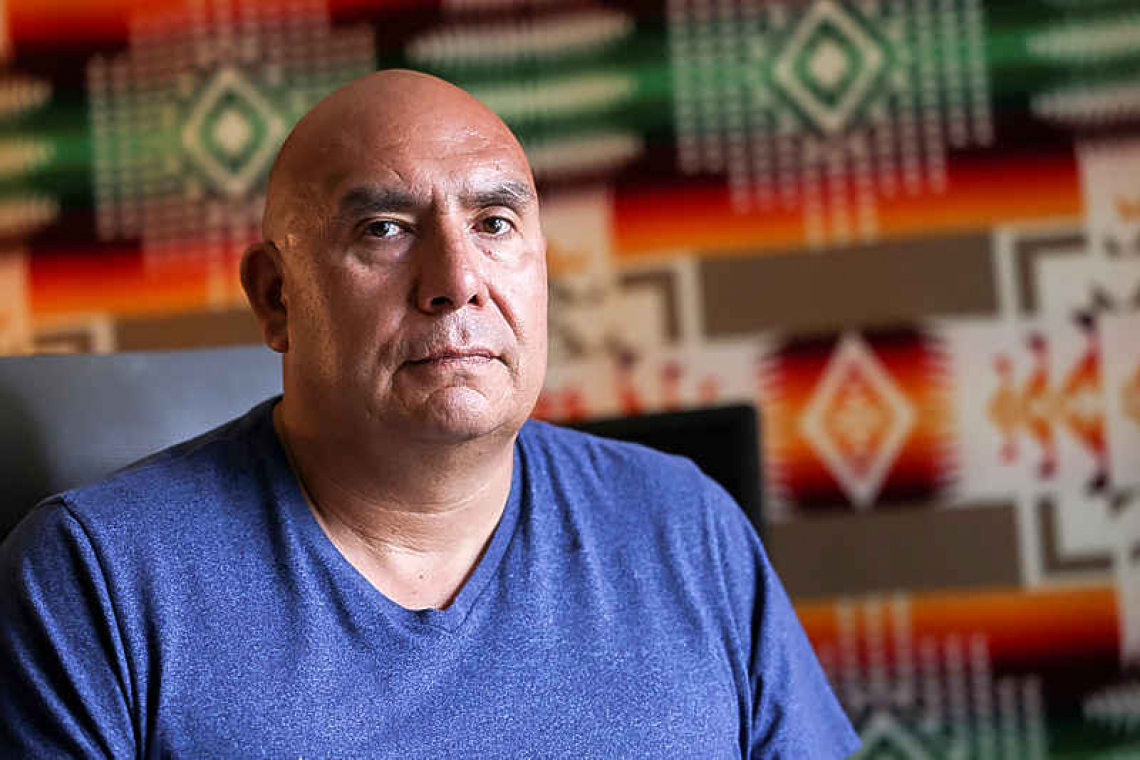Clarence Smith, who attended both Chemawa Indian School in Oregon and the Flandreau Indian School in South Dakota, poses for a portrait at his home in Thornton, Colorado, U.S., June 18, 2021.
WASHINGTON--Clarence Smith was fresh off a 24-hour bus trip from his Blackfeet reservation in Montana to the Flandreau Indian School in South Dakota in the late 1980s, where he was sent by his family in the hope he would receive a better education.
"On one of the first days of class, a white social studies teacher stood before our class and told us that we were lucky Columbus had found us, because otherwise we would still be living in teepees," Smith said.
He gazed down at the pair of LA Lakers sneakers he got just for his new school. If it weren't for Columbus, he would still be in moccasins, he recalls thinking. Many years would pass before Smith began reeducating himself, as he puts it - of finding his own history.
Flandreau, which declined comment, is one of at least 73 Native American schools out of an original 367 still in operation across the United States, according to researchers at the National Native American Boarding School Healing Coalition.
One academic researcher contends that as many as 40,000 children may have died in or because of their poor care at the U.S.-run schools, but the federal government does not know or is unwilling to say how many children even attended the schools, how many died in or went missing from them, or even how many schools existed.
As a congresswoman representing New Mexico, Deb Haaland was among those who called for a commission to fully investigate the legacy of Indian boarding schools. On Tuesday in her new position as U.S. Interior Secretary, Haaland announced that her department would investigate the schools and their lasting impact on the lives of Native Americans.
The investigation will focus on children who died while attending the schools and on finding their unmarked graves. The department will gather as complete a record as possible on the schools, where they were located and who attended them.
"I know that this process will be painful and won't undo the heartbreak and loss that so many of us feel," Haaland said in remarks to the National Congress of American Indians. "But only by acknowledging the past can we work toward a future that we're all proud to embrace."
Haaland is the first Native American to serve as a Cabinet secretary. The Interior Department oversees Indian schools, which churches began running in 1819 through federal funding.
Conditions at former Indian schools gained global attention last month when tribal leaders in Canada announced the discovery of the unmarked graves of 215 children at the site of a former residential school for indigenous children. The Canadian government said its indigenous residential schools, the last of which closed in 1996, carried out "cultural genocide." Canada's Truth and Reconciliation Commission has found at least 4,100 students died in the schools.
Flandreau, which is still operating, was founded in 1892. At the time the ethos of such schools was expressed by U.S. Civil War veteran General Richard Pratt, who founded the Carlisle Indian Industrial School in Pennsylvania in 1879 and said: "Kill the Indian, save the man."
Christine Diindiissi McCleave, chief executive officer of the National Native American Boarding School Healing Coalition, said unmarked graves linked to Indian schools also exist in the United States. "It's a little bit annoying that so many people are shocked by that news" from Canada, McCleave said. "We've been trying to tell people about this for years."







